
Sign up to receive latest insights & updates in technology, AI & data analytics, data science, & innovations from Polestar Analytics.
Editor's Note: In this digital age, data analytics plays a pivotal role in transforming industries, and the pharmaceutical sector is no exception. In this blog post, we explore the profound impact of analytics and data science in the pharmaceutical industry, spanning various facets such as drug discovery, clinical trials, supply chain management, and commercial strategies.
The current pharmaceutical industry is in the “triple squeeze”: compounding forces of economic challenges due to persistent high inflation, tight labor market and global supply disruptions. Add to this existing market conditions like design and manufacturing taking several years, a lengthy clinical process and less time to realize the ROI – creating a need for value realization without adding to the total cost of operations.
To do this, pharma companies need high digital dexterity i.e. adopting innovative technologies such as artificial intelligence, robotic process automation and big data analytics to innovate rapidly and harness opportunities in the market to gain a competitive advantage.
With the global pharmaceutical industry revenue is projected to reach $1233 trillion by 2025, growing at a CAGR of 5.8%. These trends are true across most geographies like EMEA, APAC, LATAM, and other regions (The Asia Pacific is showing strong growth trajectories with pharma sales in the Asia Pacific growing at 8.4% in 2021 with India & China expected to grow at 10%).
What does this mean for pharma companies? This means that the growth in the pharma industry is here to stay and the ones that are going forward are the ones leveraging their data well. Here’s the proof:
Operating efficiencies attainable from scaling the impact of advanced analytics in pharma industry range as high as 15 to 30 percent of EBITDA over five years, accelerating to 45 to 70 percent over a decade gave the potential impact of predictive modelling in discovering and optimizing new blockbuster therapies.
Pharma analytics and its supporting infrastructures- advancements in cloud computing, machine learning, etc. promise several cutting-edge innovations to deliver insights into pharma to formulate a fact-based strategy in the global market using big data analytics for pharma industry. Some of the most common use cases of analytics and AI in pharmaceutical industry include:
These are just the tip of the iceberg. If you take them across the value chain the impact of data analytics in pharma can be felt across all the nodes of: Research and Development, Regulatory and safety, manufacturing and supply chain, market access, and other functions.
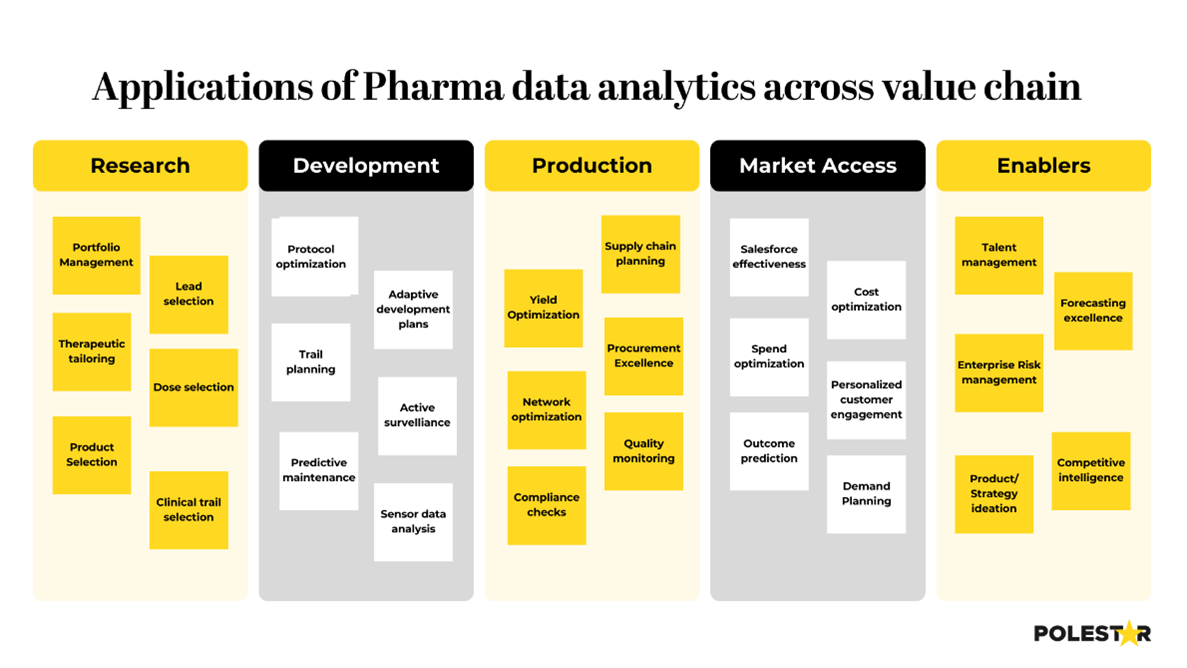
Pharma data analytics offers several benefits to pharmaceutical firms such as the ability to improve in-house processes with data-backed insights and perform in-depth competitor analysis. We’ll deep dive into 8 most common use cases of pharma analytics in just a while, but before that let’s understand the key challenges that restrict businesses from realizing this advantage.
For pharma data analytics to become successful, pharma businesses need to be innovators and adopt technology early to utilize the benefits. But CIOs find that this journey of digital transformation with pharmaceutical data analytics there are certain struggles.
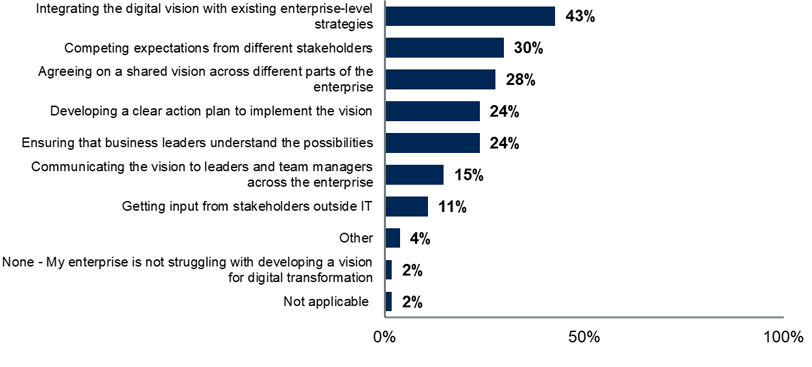
Most challenges occur when companies start looking at business functions pursuing their own digital agendas instead of looking at how they would all fit together. Successful CIOs establish a measurable, time-bound vision to prevent fragmentation and help choose the right pieces to achieve a vision aligned to the overall corporate vision. How can they do it?
Though proving the ROI on the initiatives can turn out to be a considerable challenge for many enterprises, most executives are on board with the idea, its scope, and the benefits of pharmaceutical business intelligence (BI) and analytics. But not everyone has a clear plan about how to get there.
Let us help!
If you are looking for a way to understand pharma dashboards and key KPIs, then this is for you.
1. Accelerate drug discovery
The long and costly process of drug design can be accelerated by employing data science methods for target identification, De novo molecular design, drug repurposing, retrosynthesis, prediction of reactivity and bio-activity, and post-market analysis. Graph neural networks (GNNs) can also be used for molecule generation in drug discovery.
This trend can be seen growing with the increase in AI startups for drug discovery.
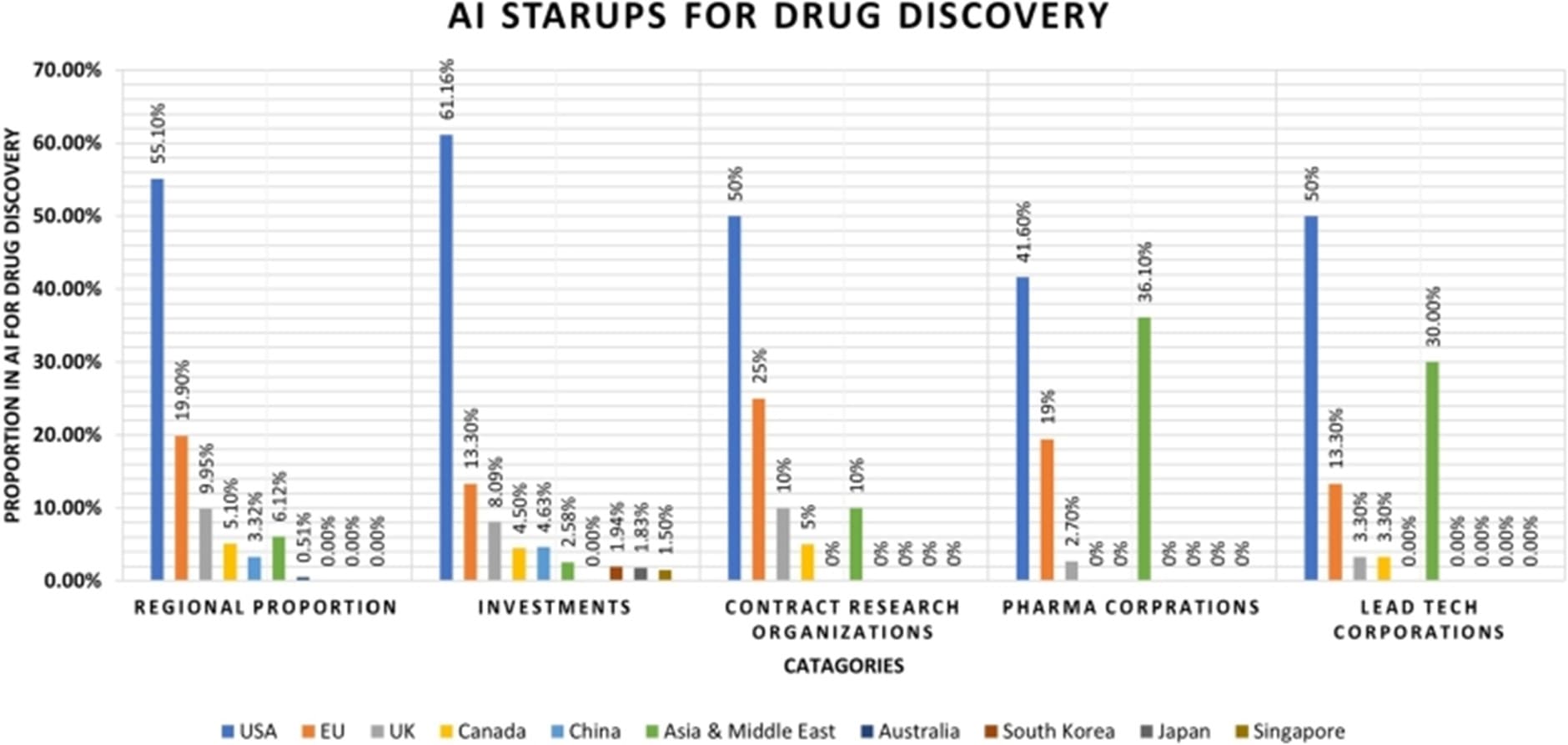
Companies like Novartis are leveraging their data to research and develop new therapies after building a strong data foundation with data lake with domain-specific access. With the help of data analytics pharma companies can analyse large datasets of scientific publications, research papers, and control group data, and utilizing predictive algorithms, to make more informed decisions.
2. Accelerate Drug development and manufacturing
With millions riding on each production, optimizing manufacturing operations and minimizing errors can result in bottom-line savings. With continuous monitoring and sensor analytics, you can optimize processes and detect any small deviations during production. Pharmaceutical businesses can analyse how machine settings, operator training levels, or raw material inputs are going to affect the output quality. With the advent of technologies like Generative AI, discovery to trial process is getting shorter: Generative AI allowed Insilico Medicine to go from novel-target discovery to preclinical candidate in just 18 months, spending only $2.6 million.
For example, Pfizer’s collaboration with AWS is to develop a prototype solution for detecting abnormal data points in its drug product continuous clinical manufacturing platform for solid oral-dose medicines. Built on Amazon SageMaker it leverages AI and machine learning models to detecting anomalies while identifying their root causes.
3. Supply chain Optimization
Being an industry, that is primarily price inelastic, pharma industry is in one such advantage that can only be gained through their data. With the right demand forecasting and inventory management, pharmaceutical brands can anticipate demand fluctuations combined with seasonal data to optimize their inventory levels and plan for timely delivery of medications. This can ensure the reduction of both wastage and changes of stockout. Companies like Merck have started improving their supply chain with analytics (95% OTIF) and to adapt to future disruptions. With advanced analytics in pharmaceutical data, you can gain end-to-end visibility in supply chain activities like: enhanced supplier connectivity, real-time traceability across manufacturing, warehouse and distribution centres, and identify vulnerabilities for the future.
~ McKinsey
4. Personalize & Create Targeted Medications
Personalizing medicine can be especially effective for treatments like cancer, hepatitis, etc. where personalized treatments can be provided based on their specific mutations and profiles. Pharmacogenomics / Pharmacogenetics, which studies the interaction of genome-drug response can leverage predictive analytics to forecast the type of interactions based on data. Big data analytics in the pharmaceutical industry can solve such problem by combing through data of genomic sequencing, patient’s medical sensor data (the device that can be worn to track physical changes in an individual during treatment) and electronic medical records. One great example of this initiative is with GSK, who use AI systems to build tools that will support clinical decision-making in personalized medicine for cancer patients.
5. Sales and Marketing
By capturing key data points, pharmaceutical business intelligence & analytics can help new markets to be identified – both for micro-markets and geographical expansions. It will help to improve the effectiveness of the salesforce by understanding and optimizing the deployment of sales representations and create better routes ensuring they target the right healthcare professionals overall helping them to make better & faster decisions. For example, Pfizer has deployed a digital-rep adviser, powered by AI and machine learning, to provide sales teams with targeted decision support when they interact with physicians.
Additionally, the efficiency of the different marketing channels can be analyzed to prioritize efforts and gain a competitive edge. This will help you to make effective capital and resource allocation decisions, adopt innovative technology, and overall increase pharmaceutical operational efficiency.
6. Quality control and compliance
With stringent government regulations increasing by the day, failing to adhere to the rules can open up civil & criminal lawsuits which can not only harm the drug maker’s reputation but can also result in making huge payouts to settle the charges. Therefore, these regulations can be integrated with quality checks to ensure compliance in pharma operations at all times. For example, Sanofi is using natural language generation (NLG) to convert their data tables into written content that can be submitted to the U.S. Food and Drug Administration and other regulatory authorities. This ensures faster task completion - what used to take a team of clinical writers’ weeks to accomplish can now be completed in minutes.
7. Improved efficacy of clinical trials
Big data analytics in pharma can help pharmaceutical businesses by leveraging predictive modelling to reduce the cost and speed up clinical trials by optimizing clinical trial designs, patient stratification, site selection identifying and analyzing various data points: such as the participants’ demographic and historical data, remote patient monitoring data, and by examining past clinical trial events data. Also, developing digital models of clinical trials including synthetic control group data is being validated. By optimizing this whole process & identifying test sites with high patient availability, pharma firms can use pharmaceutical analytics to speed up disease diagnosis and design more efficient control groups and clinical trials. Analytics can also help adjust trial designs in real time based on incoming data, optimizing study outcomes.
8. Post-market surveillance and social media listening
In addition to leveraging data to optimize the supply chain to consumer cycle, the safety and efficacy of drugs and medical products can be monitored with data science in pharma after they have been approved. From early detection of potential safety concerns to crisis management analytics can help pharma companies gather feedback from consumers and healthcare professionals through various channels, including social media.
By scraping through internet data, companies can tap into what conversations people are having online around, for instance, their product launch & similarly around their competitors. Natural language processing (NLP) and sentiment analysis can be employed to categorize and prioritize reports.
With generative AI now in the mix of analytics for pharmaceutical companies, it has become more important than ever to think about the right use cases to start with as it has the scope of fundamentally rethinking all data strategies.
From content assistance to sales assistance there are lot of use cases for Generative AI in pharma. A few of them are listed below:
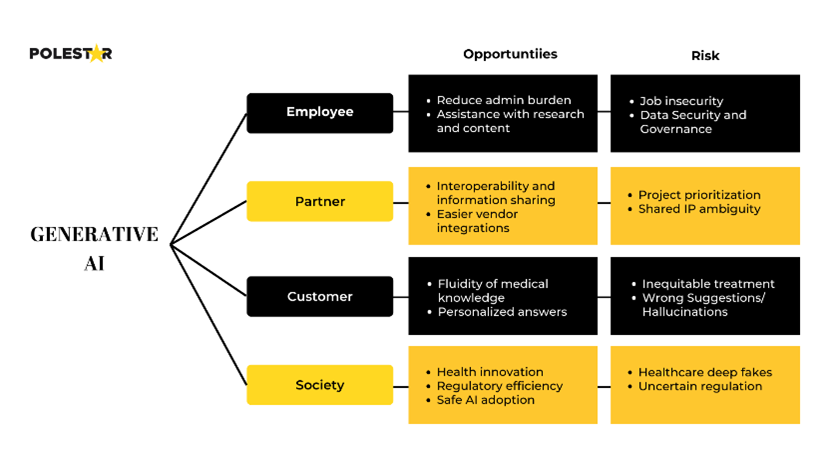
To derive optimum benefits, a company-wide strategy to mobilize analytics is needed. Advanced analytics presents a significant & real advantage for pharma companies to gather data & build models for turning insights into impact at scale. But first, they must identify and prioritize how to invest their time, money & effort.
Find the right use cases, start small, and onboard believers in your process. Get an executive to back your project. Show your ROI in the early stages by choosing wisely the right use case to target in the beginning. You will find that it will then become more comfortable over time to gather more supporters for your initiative and turn doubters into believers.
But where to start?
By establishing clear data management practices.
To understand this let’s take a look at Data and Insights with the help of the Data and Analytics Infrastructure Model by Gartner. When we are trying to generate unknown insights in real time having a data lake is essential and when trying to generate insights from known data for operational purposes data warehouse is essential.
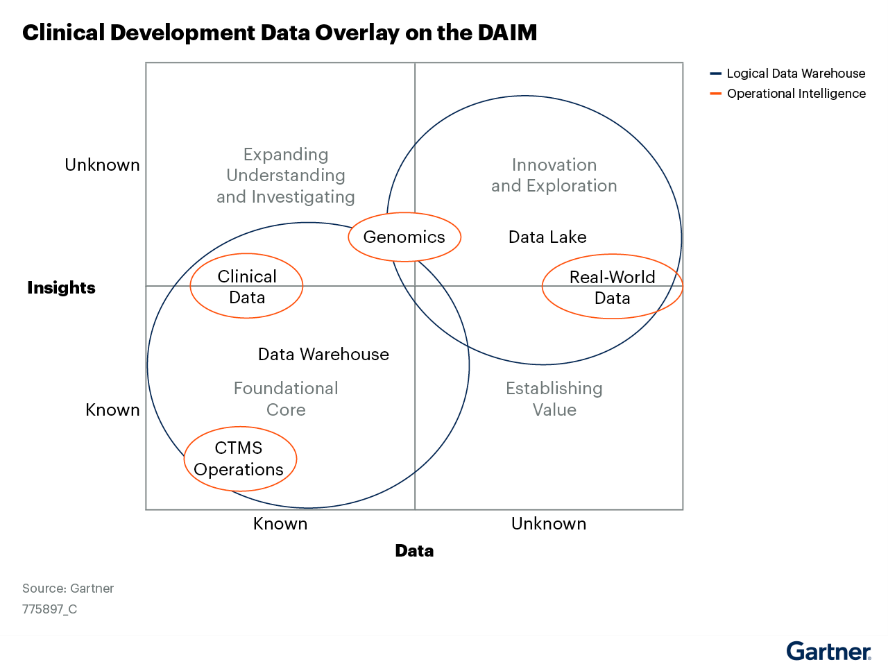
Once you have solid foundational practices break down data & process silos which can be the death knell for pharma business intelligence and big data analytics in pharma. Implementing agile use-case sprints with streamlined governance and implementing change management initiatives will be the key to success. Having the action driven by the leadership will help to effectively break down biases & prejudiced notions about the scope and role of analytics and tackle the naysayers.
Polestar Analytics can help you to implement the right solutions to set up success with analytics. Our data science experts understand the typical problems pharma companies face and have deployed suitable analytics systems that help you derive impact from your data and deliver success on pharma data analytics use cases.
About Author

Data & BI Addict
When you theorize before data - Insensibly one begins to twist facts to suit theories, instead of theories to suit facts.